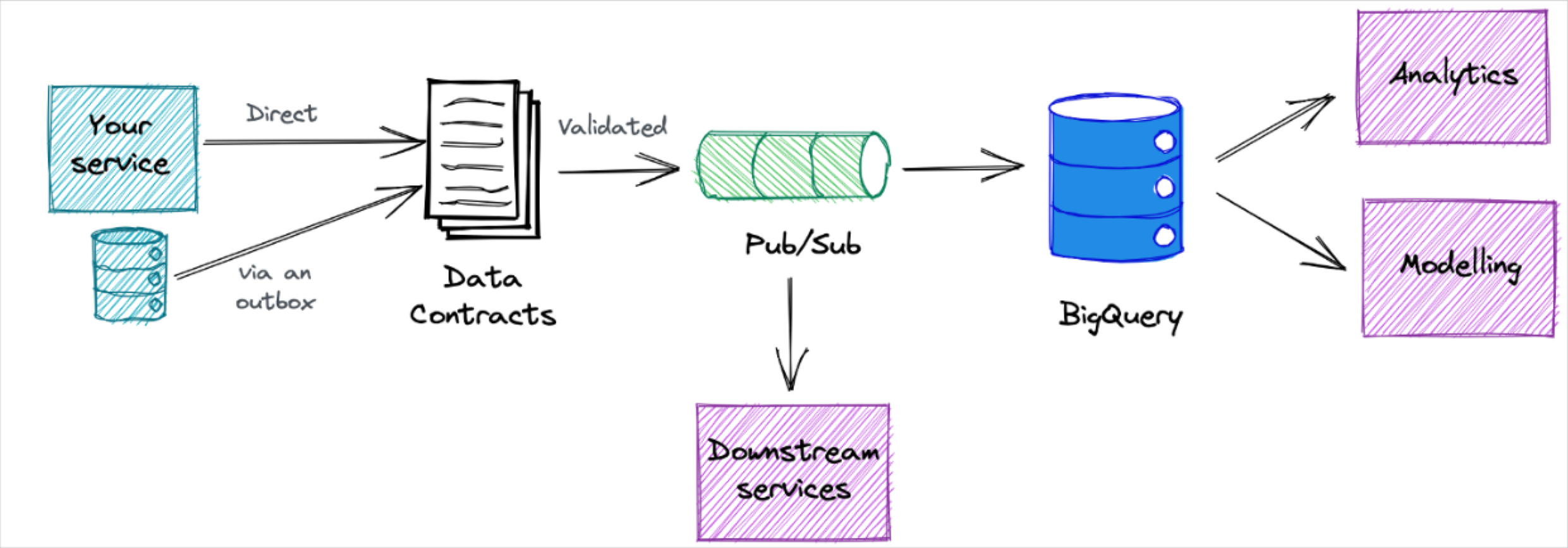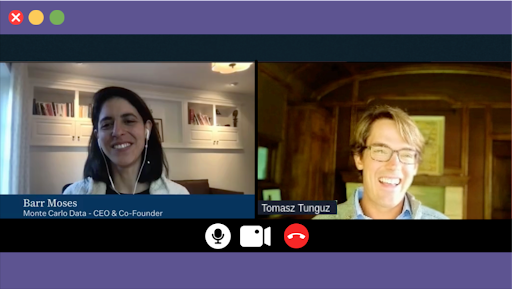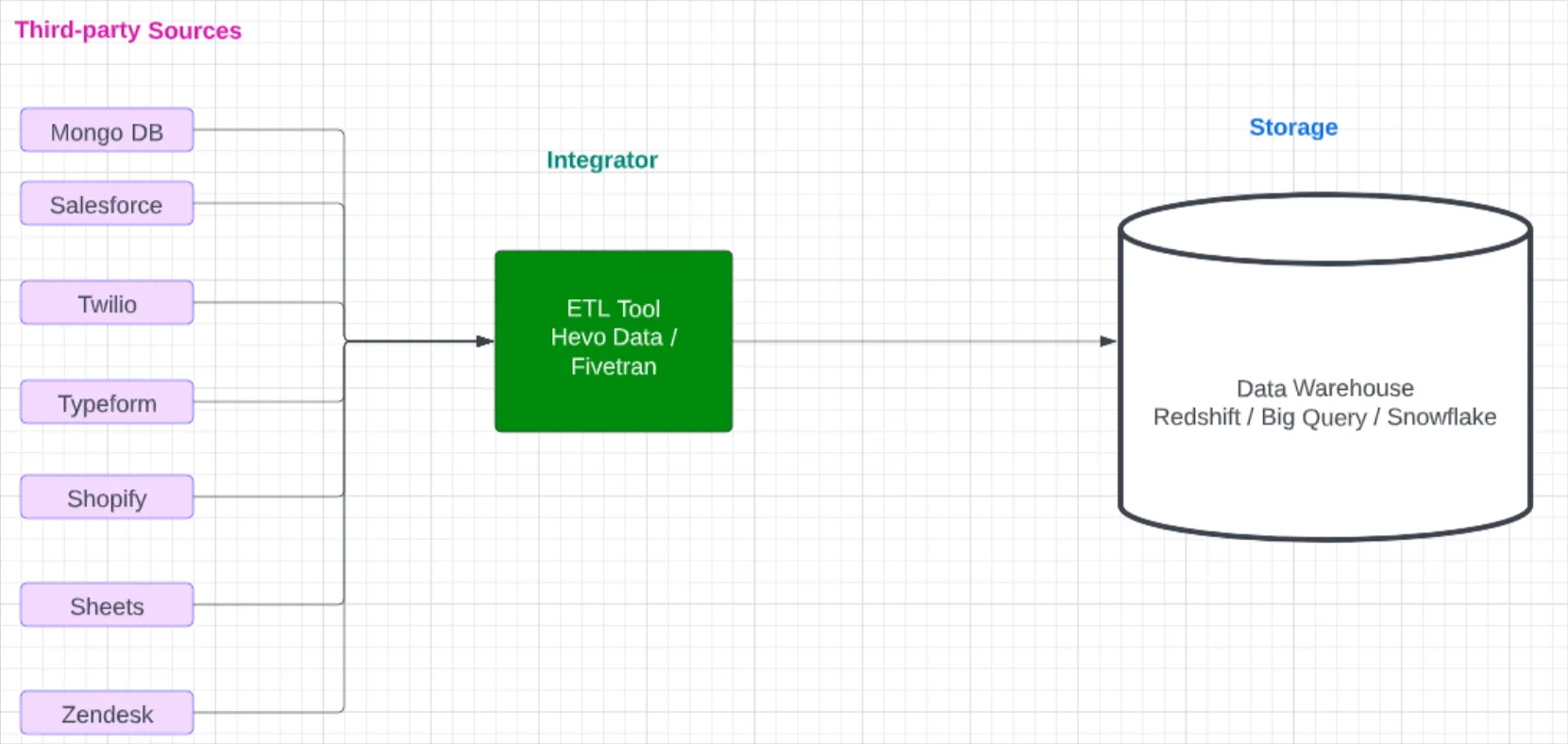7 Questions to Ask When Building Your Data Team

When it comes to ensuring your data team is happy and productive, answering these questions about structure, scope, and culture will make all the difference.
In 2021, it’s never been a better time to be in data.
For one, the job market for data analysts and engineers is hotter than ever. In fact, according to the U.S. Bureau of Labor Statistics, data analytics jobs will see a 25 percent increase from 2020 to 2030, and we don’t need to tell you that data engineers and data engineer-adjacent roles are in short supply and high demand (but if you don’t take our word for it, check out page 19 of Dice’s Q1 Tech Job Report).
The “modern data stack” is on fire (in the best way possible) with new companies and solutions emerging to tackle some of the biggest problems facing our field, and opening up data engineers, analysts, and analytics engineers to more innovative and interesting work tied to business impact.
Still, building and leading a data team can often feel like an exercise in balancing the neverending stream of ad-hoc requests and fire drills you’re bound to receive from your end-users with opportunities for strategic growth. When your company is moving a million miles a minute and there’s no stop sign in sight, what’s a manager to do?
When it comes to hiring for the right roles, determining team charters, and generally ensuring your organization scales alongside the demands of the business, it helps to start by asking yourself a few important questions.
We sat down recently with three of today’s most impactful data leaders, Wendy Turner-Williams, the Chief Data Officer at Tableau, Erik Bernhardsson, the former CTO of Better.com, and Zosia Kossowski, the Group Product Manager of Business Intelligence at HubSpot, for a wide-ranging conversation to layout these key topics and offer best practices for managers just getting started on their journey to building productive, effective, and most importantly, happy, data teams.
How should you structure your data team?
When it comes to setting your team up for success, perhaps there isn’t a bigger question than to centralize or decentralize?
Prior to joining HubSpot to lead Business Intelligence, Zosia spent 5 years managing analytics teams at Wayfair, an online home goods retailer. At both companies, she saw her fair share of organizational structures, each with their own pros and cons. Her biggest piece of advice? Regardless of which model you choose, prioritize intentionality early on.
“Sometimes, teams will hire analysts, and they will grow up in ways that don’t have intentionality to it. Leaders need to make a decision about whether we want it to be purely centralized or distributed early on,” said Kossowski. “Because the way you interact with each team and department is completely different, you need some standardization around it.”
Kossowski was inspired by a 2017 Harvard Business Review article that discussed the need to balance “defensive and offensive” tactics in your data strategy and it influenced her thinking around building her team. Now, she takes the following questions into account when deciding how to structure her data organization.
- What industry are you in?
- How important is data security, privacy, and governance compared to the ability for teams to move fast and bring insights to the market?
Zosia suggests that while security and privacy are important for every industry, there are other industries (like healthcare or financial services) where governance takes top billing.
“[At HubSpot, a B2B technology company that builds inbound marketing products], there are places where we want to make sure that security is very important,” according to Kossowski. “At the same time, if we get wrong the number of times someone clicks a button it is probably not going to have as much significance as if someone gets a patient’s healthcare information wrong.”
However, Kossowski acknowledges that there is no hard and fast rule about which data team structure is best as each scenario is going to be very different for every organization.
Having previously operated in both extremes (centralized and decentralized), Erik raises the point that both structures have pretty substantial drawbacks which are important to be aware of. One of the biggest challenges of having a centralized data team, he says, is managing external stakeholder expectations.
“Centralized team, for instance, have the drawback that external stakeholders feel like you often create a little bit of a gatekeeper mentality. It also can create a long lag time and external stakeholders feeling like they don’t understand resource management,” Erik explained.
Meanwhile, Erik suggests that the downside of a fully decentralized team is mainly on the talent side. In short, hiring and retaining someone can be more challenging when they’re reporting to someone who doesn’t understand their work.
So which structure does Erik prefer? Over the years he has come to realize that the hybrid model is the “least worst of all the different options” and is what he ultimately decided to implement at Better.
Similar to Erik, Wendy prefers a hybrid model as it blends both the centralized and decentralized approaches.
“I’m in an industry where there are a lot of data users across the organization who have different business priorities operating at different speeds, ” said Turner-Williams.
With a hybrid model, Wendy argues that teams can centralize the data platforms and services but keep the analytics and data users spread out across the organization.
How do you measure the impact of your data team on the rest of your company?
Measuring your data team’s impact is hard for any organization, said Zosia. At HubSpot, Zosia’s team uses an internal NPS survey delivered to their business stakeholders.
“The way that we started measuring our data team performance or in my case, the BI team performance, is through a system survey that goes out quarterly to our internal teams at HubSpot, and recently, we added a section on data,” she said. “We have ratings for all of our systems that BI maintains for the platform.”
On top of these ratings, leadership must ask questions related to data and data product accessibility and ease of use:
- Do you have the data you need to do your job?
- Do you have the training you need to work with that data?
- Do you have the tools you need?
Essentially, all these questions asked by Zosia’s team throughout the survey help measure the impact her team is having on her organization.
Erik agrees with Zosia regarding how difficult it is to measure the impact of your team, but that NPS scores can help – if bandwidth allows. Leveraging an NPS score helps create more ownership of your product (data) because stakeholders have an opportunity to provide direct feedback.
“At most companies, data ends up being a service function so you should measure something like NPS to find out if others are happy with those services,” Erik said.
Similar to how both Erik and Zosia measure impact with an NPS score, Wendy also tends to leverage an outside assessment to track the effectiveness of her team’s work.
“[For instance, at a previous company], we conducted an outside assessment every year across the company where we rate where we are on an industry level across the entire organization,” said Wendy. “We did it in a very decentralized way, meaning that we actually sat down with specific domains and specific teams and rated their end-to-end processes. We would then give them migrations or feedback in regards to gaps.”
Who “product manages” your team?
As data becomes increasingly productized (meaning, distributed, reliable, and made available) to the rest of the company, data leaders need to understand who will manage your team’s KPIs and broader operations. Asking this question early on in the team-building process will be critical to hiring – and developing – the right talent. While some companies opt to develop program or product managers from within the ranks of analytics or business intelligence, others may deem it appropriate to hire a data product manager as one of their first roles, depending on the needs of the business.
Wendy strongly recommends hiring a data product manager early on, particularly if your company’s data needs are distributed across multiple teams.
“From my perspective, a data product manager is actually one of the first roles I would hire for. I like them to actually create the vision and then drive the engineers to that vision,” she said. “For me, it is a critical component as I tend to focus on data product managers who can create a story, engage with our internal customers or even our product team.”
According to Zosia, it’s best to hire a data product manager when you reach the point where the next step is not clear based on the technical work that needs to be done.
“You need to weigh different prioritization decisions, different customer needs, and be at the point where you can no longer get by just doing what the customer asks for,” Zosia added. “If you wait too long before having that function you end up in a situation where you are creating point solutions for multiple problems rather than thinking about the underlying need that cuts across all of those.”
On the other hand, Erik usually takes a more traditional approach. (That being said, he prefaced his answer with the fact that he has never really worked with data product managers given the hybrid org structure at his previous companies).
“As much as possible I would rely on engineers to handle their responsibilities, and analysts to drive business value,” he suggested. “That being said, I’m a big fan of traditional product managers working on different features. You should hire a lot of those people and you have them work with the data team. Data product manager, I feel like, I would hold off hiring on if their scope is covered by other roles.”
How can you set your team (and company) apart in the recruiting process?
Given how competitive the hiring landscape is for data people, Zosia, Erik, and Wendy all agree that identifying tangible ways you can differentiate the opportunities on your team from others in the market is of the utmost importance.
“The industry right now in particular is incredibly hot, and data is really an area of focus for recruiting,” said Williams. Over the years of hiring data scientists and analysts, she has found that applicants tend to focus on two areas when it comes to deciding where they want to work.
- Who is on their management team? Candidates care about their manager’s personality, their transparency regarding the role, and most importantly the culture of the company.
- In what ways will I grow my skill set, network, and career? Candidates want to know what the product opportunities are, if they can build something at a massive scale, and if there are leadership opportunities, either as a technical lead or personnel manager.
Wendy uses all of those perspectives to create a story and have an open dialogue, in turn making it clear to candidates that they’ll be able to quickly grow on her team and at the company.
According to Zosia, many of the best candidates are motivated by having short-term, tangible problems to solve and the necessary internal support to solve them.
“If you join a company and there are a lot of problems, but no path to solving them, you are going to get frustrated in the same way that if you join a company and everything is working fine,” added Zosia. “You need to be able to strike a balance.”
When Erik first moved into a position where he began to hire data workers he underestimated the amount of time it required to hire the right people.
“The most important thing about hiring is putting in the time, it takes a lot of time,” he argued. “At Better, I spent upwards of 50-70% of my time on hiring, and honestly it’s the most important thing you can do as a data leader. To set our company apart from competitors, it’s all in the job description to find the right people.”
His advice? Ensuring that expectations are clear regarding what the role will own at a cross-functional level.
“With data teams specifically, one thing I’ve seen that can be challenging is expectations mismatches about what data science and data analytics actually involves,” he said. “A few years ago, I would get an insane amount of people applying for data science roles thinking they would be working directly on machine learning algorithms, and that wasn’t always the case.”
How accessible is data to your stakeholders?
Data accessibility and security are top of mind for any data leader, particularly for organizations with distributed analytics teams or working with sensitive third-party information. As a result, data governance and compliance should be top of mind when determining how to manage expectations for your team.
Zosia is the first to acknowledge that it is not an easy task to build a culture that prioritizes governance, particularly at scale.
“From a cultural aspect, it’s tough when a community, especially as a company grows quickly and is used to having a certain level of autonomy in general, not just with data,” added Kossowski. “As your company gets larger, you really have to implement more processes and regulations to make sure that you are bringing everyone along and having them understand the pain that a lack of governance and alignment can cause.”
Erik, who admits he’s never worked at a public company, suggested that everyone at fast-growing startups should have access to all data to facilitate discovery and innovation.
“I’ve never worked at a public company, so I take it with that context. I think as you’re building a company from scratch, you can get quite far by giving open access to everyone,” he said. “And I think that’s great because people are going to discover a lot of fun stuff in the data and that’s a good thing. Still, at some point, your team is going to realize that there needs to be a process and governance, and that’s fine.”
Zosia acknowledges that data governance is also a cultural shift for most organizations.
“If you are a data-driven company and it is a priority for your data to be clean and usable when a product is released that is part of the acceptance criteria, then it is a lot easier than if data is a byproduct or an afterthought that is troublesome when you have to come to an engineering team and you’re like this is wrong,” she added. “My recommendation is getting engineering leaders and anyone who’s involved in producing data as part of your data governance conversations early on so they understand the pain that is caused as well.”
Similarly, Wendy strongly believes that the accountability for data governance should be put on the data owner itself. “We put the right policies in place and we have business owners and data stewards who are accountable and own that data based on the subject type,” said Williams. “Ultimately they are responsible for that data, the controls around that data, and the access around that data.”
At Salesforce and Tableau, Wendy has spent the last four years trying to figure out the right formula to create that perfect balance between scaling as a team and maintaining a culture of autonomy and ownership, something she admitted is very challenging especially in a world that is privacy-oriented. Ultimately, she settled on the need to democratize the discovery of data while also separating discovery from access.
“There’s data that people want to know about, but it doesn’t necessarily mean that they need to use it,” added Williams. “You can democratize from a finding perspective and a discovery perspective, and then you can put in the right types of access control and governance processes to ensure right-sized governance, and that they truly have the business need to actually use that data.”
What does “self-service” look like for your data team?
According to Zosia, self-service for her organization is different than most considering the majority of internal customers are already very technical and most of them have analytics engineers working with them. “When I think of self-service for us, it’s self-service for the analytics engineers,” added Kossowski. “They can access the data they need and can ingest the data they need into the warehouse, but we also have the right guardrails to ensure that we are not ending up with a proliferation of different places to get the same information.”
Erik feels like there is a common misconception in the broader data community that self-serve is a way to address data needs. According to Erik, self-service is really more of a cultural shift and not something that can be solved by technology alone.
“I never want a data team where other people feel like they’re monopolizing data, and some easy form of self-serve does a really good job with that,” added Bernhardsson. “The other thing is self-service should never become its own dominant form of data consumption, because if that happens the data team is actually not doing a great job of working with other teams.”
In Wendy’s point of view, self-service is being able to do anything you would like to do with data from acquisition to curation. In her opinion, self-service is also about providing the right infrastructure, services, and platforms that allow a person to decide what they need to do based on their particular role, but also have the tools to do so.
“To me, it’s really about giving them all the tools that let them actually get the benefit and value of the data itself,” she said.
What’s your vision for the future of data at your company?
Finally, it’s important for managers to convey a clear vision of what data at your company looks like over the next six months to one year (or more!), and how the organization will grow over time. Being able to answer this question and communicate your strategy to get there will help teams stay motivated and aligned at all stages of their growth, even when plans change.
So what most excites our panel about the future of data?
For Zosia, self-service, analyst-friendly data platforms rise to the top of the list.
“Putting power into the hands of the people that are using data and don’t have to rely on a team that has to do a bunch of cleaning and transformation before the data is usable excites me,” said Kossowski. “There are some opportunities to introduce data science into that cleaning and transformation layer into data discoverability, and there is a lot of opportunity to make that a lot more user friendly.”
Similarly, Erik can’t wait to see what the next five to ten years of innovation bring when it comes to building better tooling for the data engineering stack.
“Over the next five to ten years you are going to see data stacks maturing and more consolidation amongst companies,” he added. “I am most excited about the new level of infrastructure and the better tools that can enable data teams to work 10 times faster.”
Wendy is most excited about self-service and how important that is becoming for organizations.
“Simplifying and putting data in the hands of those who need it, when they need it is hugely important,” she said. “In addition, literacy is equally important and goes into multiple things such as how you educate people inside your own company to use data and understanding how data is used across teams to give you insight into what you can do with data and drive value from it.”
With these seven questions in your back pocket and an exciting few years ahead, what’s your vision for the future of your data and analytics at your company?
We’re all ears.
Interested in learning more best practices for leading data teams? Check out Monte Carlo’s 2021 data platform trends report for more. Book a time to speak with us using the form below.
Our promise: we will show you the product.
 Product demo.
Product demo.  What is data observability?
What is data observability?  What is a data mesh--and how not to mesh it up
What is a data mesh--and how not to mesh it up  The ULTIMATE Guide To Data Lineage
The ULTIMATE Guide To Data Lineage 






